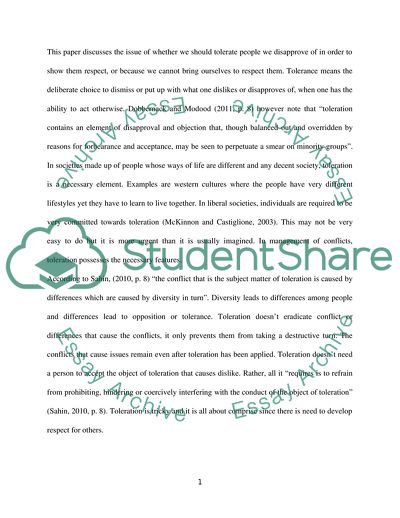Cite this document
(The Issue of Tolerating People We Disapprove Coursework Example | Topics and Well Written Essays - 2000 words, n.d.)
The Issue of Tolerating People We Disapprove Coursework Example | Topics and Well Written Essays - 2000 words. https://studentshare.org/social-science/1864816-should-we-tolerate-people-we-disapprove-of-in-order-to-show-them-respect-or-because-we-cannot-bring-ourselves-to-respect-them
The Issue of Tolerating People We Disapprove Coursework Example | Topics and Well Written Essays - 2000 words. https://studentshare.org/social-science/1864816-should-we-tolerate-people-we-disapprove-of-in-order-to-show-them-respect-or-because-we-cannot-bring-ourselves-to-respect-them
(The Issue of Tolerating People We Disapprove Coursework Example | Topics and Well Written Essays - 2000 Words)
The Issue of Tolerating People We Disapprove Coursework Example | Topics and Well Written Essays - 2000 Words. https://studentshare.org/social-science/1864816-should-we-tolerate-people-we-disapprove-of-in-order-to-show-them-respect-or-because-we-cannot-bring-ourselves-to-respect-them.
The Issue of Tolerating People We Disapprove Coursework Example | Topics and Well Written Essays - 2000 Words. https://studentshare.org/social-science/1864816-should-we-tolerate-people-we-disapprove-of-in-order-to-show-them-respect-or-because-we-cannot-bring-ourselves-to-respect-them.
“The Issue of Tolerating People We Disapprove Coursework Example | Topics and Well Written Essays - 2000 Words”. https://studentshare.org/social-science/1864816-should-we-tolerate-people-we-disapprove-of-in-order-to-show-them-respect-or-because-we-cannot-bring-ourselves-to-respect-them.


